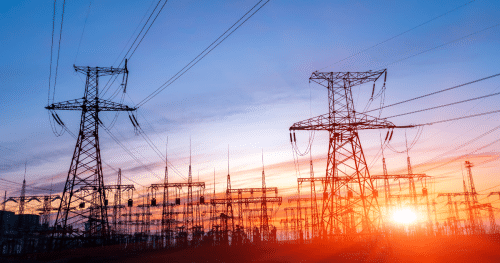Client
Las Arenas Shopping Center, Merlin Properties
Scope
Energy savings strategy for a supermarket location looking to reduce costs and emissions while maintaining productivity.
In the world of retail, energy consumption is both a cost and sustainability challenge—especially for supermarkets. These stores operate long hours, rely on energy-intensive systems like refrigeration and HVAC, and manage perishable goods that demand a tightly controlled environment.
One standout example of energy transformation in retail comes from SUPERSPAR Despatch, a 2,000 m² store in South Africa that operates 7 days a week. Faced with rising electricity bills and an increasing need to reduce carbon emissions, the store’s owners turned their concerns into action—and achieved €93,476 in savings
Like many supermarkets, SUPERSPAR Despatch struggled with the high energy demands of its bakery, freezers, HVAC system, and lighting. The goal was clear: reduce electricity costs and emissions—but without impacting productivity or customer experience.
The Energy Efficiency Strategy
With the help of the expert advisors from IDM Solutions, Superspar Despatch developed a compelling energy management plan that delivered fast and important results.
- Baseline Energy Audit: Analysis of past utility data revealed quick-win savings opportunities.
- Tariff Optimization: Load shifting led to an 8% energy cost reduction.
- Sub-metering: Installed on HVAC, bakery, lighting, and butchery systems to identify high-use areas.
- Real-Time Monitoring: Spacewell Energy helped detect inefficiencies and supported energy balancing.
- Feasibility Studies: Projects with <3-year payback periods were prioritized, including: Skylight installation for daylight harvesting, LED lighting upgrades and replacement of bakery ovens with energy-efficient models
To further reduce emissions, the store signed a Power Purchase Agreement (PPA) to source renewable energy. Spacewell Energy also enabled sustainability tracking and compliance reporting for carbon emissions.
“The sub-metered energy data enabled us to get a clear understanding of the energy usage and costs of our energy-intensive processes. That allowed us, along with life cycle costing of new purchases, to upgrade our facility with energy efficient equipment. The results speak for themselves.” Paul Barns, Owner, SUPERSPAR Despatch
Energy Efficiency in Supermarkets: The Results
SUPERSPAR Despatch is a great example of combining traditional energy reduction measures such as reducing peak energy usage and innovation with renewable energy sources installed on-site.
The transformation delivered outstanding results:
- 24% reduction in total energy costs
- 46% drop in CO₂ emissions
- 50% drop in bakery energy use, leading to a 57% cost reduction in that area alone
SUPERSPAR Despatch is now a benchmark for energy efficiency in retail, demonstrating how smart monitoring, data-driven planning, and strategic upgrades can drive real savings and sustainability.









